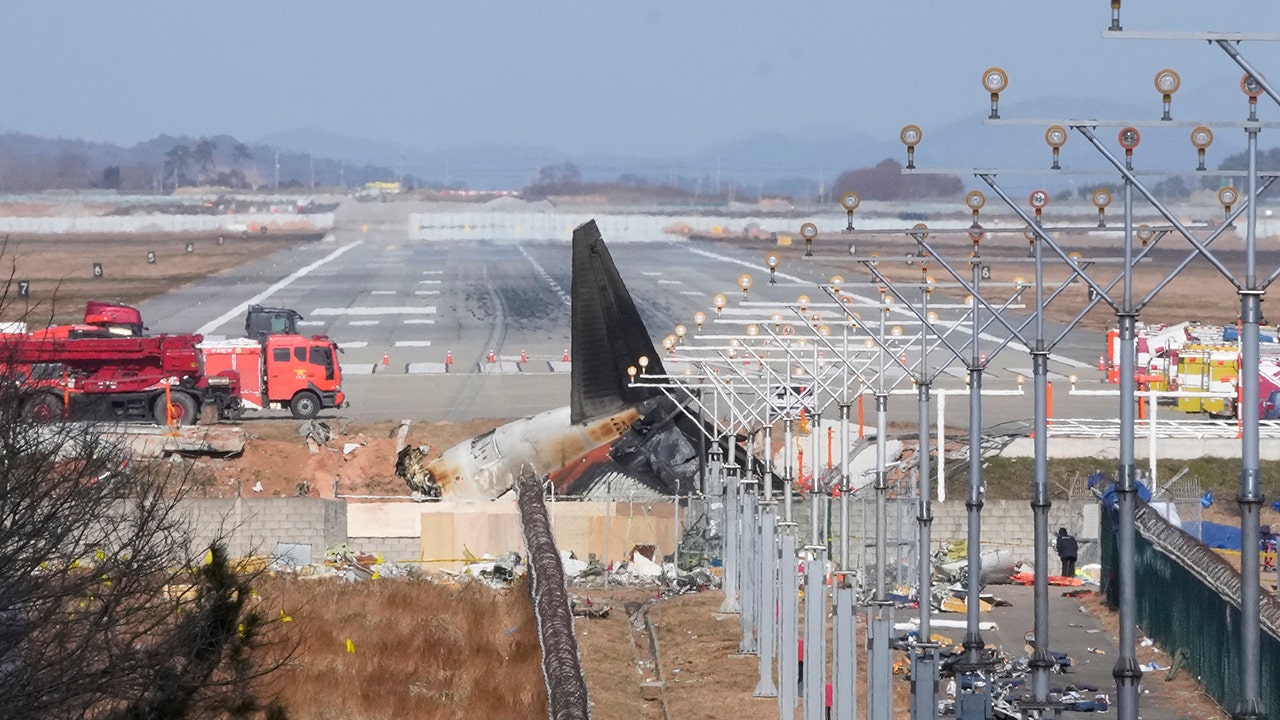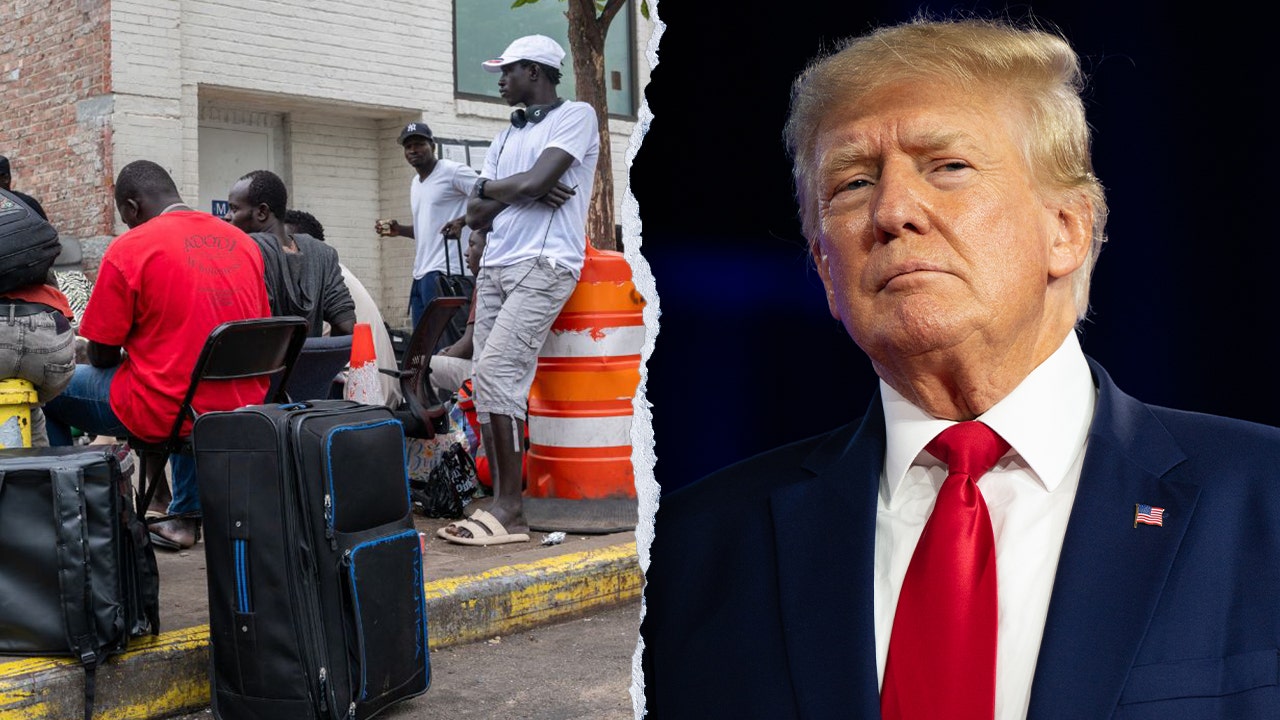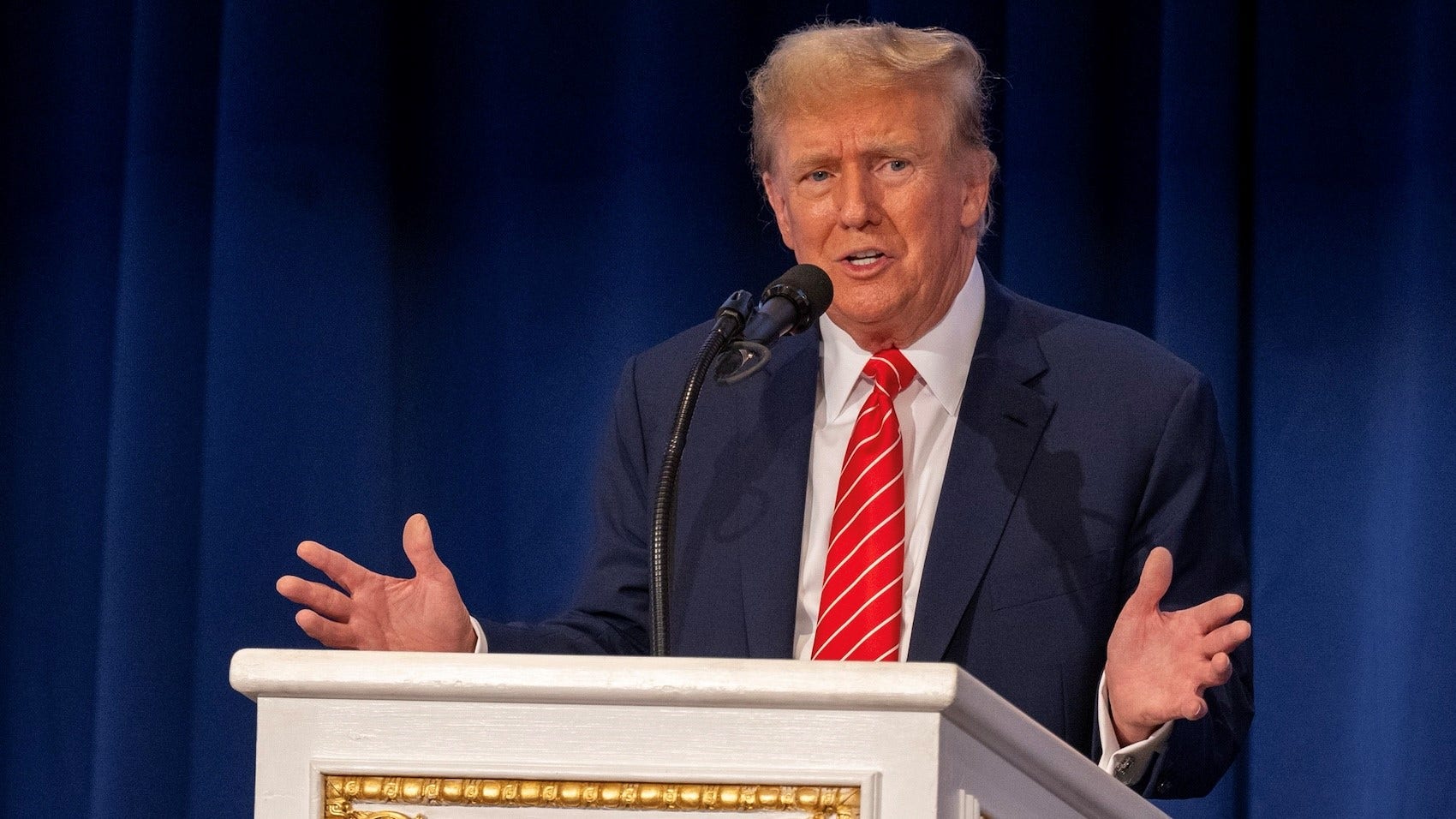Idaho
More closures planned as construction continues on the new South Jerome Interchange

JEROME, Idaho (KMVT/KSVT) — The Idaho Transportation Department will begin more roadwork and construction this week on the South Jerome Interchange along Interstate 84.
Crews will close East Frontage Road North on Tuesday and begin flagging on Monday, according to the department. Motorists can access Farmore Road from Lincoln Avenue, but motorists whose destination is past Farmore Road will have to detour through Lincoln Avenue, Yakima Avenue, and South 100 East.
East Frontage Road’s closure is expected to last into late fall as crews realign the road to the new intersection at Lincoln Avenue.
Bob Barton Road will be utilized as a temporary off-ramp at the interchange until fall 2025 as crews work on the new eastbound off-ramp, according to the department. On Wednesday, crews will shift eastbound traffic exiting to the temporary off-ramp. Traffic will exit the Interstate, head south on Bob Barton Road, and stop at a three-way intersection.
The department advised motorists to plan, slow down, and pay attention. More information regarding the closure or potential detours can be found at 511.idaho.gov or by clicking here.
Copyright 2024 KMVT. All rights reserved.

Idaho
City of Idaho Falls wants your input on what you love and how to improve – East Idaho News

The following is a news release from the city of Idaho Falls.
IDAHO FALLS – The City of Idaho Falls wants your input on what you love about Idaho Falls and how it can improve through a community-wide survey.
Randomly selected households will receive a mailed postcard over the next few weeks. Households that receive a postcard are asked to follow the instructions and complete the community survey.
All residents will have the opportunity to share their input in February when the survey becomes available to the entire community.
“Idaho Falls has continually been ranked among the top small cities in the United States, but … the only ranking that really matters is yours — and how much you love your city,” said Idaho Falls Mayor Rebecca Casper. “This is why we are excited to receive more input from the community to guide city officials as we continue to make Idaho Falls the community we want to live work and play in.”
Idaho Falls has partnered with Polco, a leader in the field of civic engagement and surveying, to issue the 2025 National Community Survey in Idaho Falls.
The National Community Survey (The NCS) was developed by National Research Center at Polco. The survey captures opinions on the economy, mobility, community design, utilities, safety, natural environment, inclusivity, engagement, and other elements of Idaho Falls’ overall livability. The results will show Idaho Falls’ strengths, areas of improvement, and what matters most to residents. The city will also be able to see how its performance compares to other communities across the country.
Survey results will be compiled in a report by Polco and shared by the City of Idaho Falls with the community in the spring.
“We strongly encourage all residents to take the survey. The more people who participate, the better data we will have to inform our decisions. This is an opportunity for everyone in the community to share their thoughts and shape the future of Idaho Falls,” Casper said.
For more information on this City of Idaho Falls Participation in the National Community Survey, contact the city at (208) 612-8562 or click here.
=htmlentities(get_the_title())?>%0D%0A%0D%0A=get_permalink()?>%0D%0A%0D%0A=htmlentities(‘For more stories like this one, be sure to visit https://www.eastidahonews.com/ for all of the latest news, community events and more.’)?>&subject=Check%20out%20this%20story%20from%20EastIdahoNews” class=”fa-stack jDialog”>
Idaho
Remembering JFK's visit to eastern Idaho amid Trump's effort to declassify assassination files – East Idaho News

IDAHO FALLS – More than 3,000 people filled the auditorium at Pocatello High School as the Democratic senator from Massachusetts stood at the podium to address the crowd.
It was Sept. 6, 1960. The Gate City was one of many stops for John F. Kennedy during the Western states tour of his presidential campaign. Accompanying him during his visit was Idaho’s U.S. Senator, Frank Church, who’d nominated Kennedy at the Democratic National Convention in Los Angeles two months earlier.
At the DNC, Kennedy delivered what is now referred to as the “New Frontier” speech, in which he called on Americans to move beyond the status quo and help usher in a modern era of leadership.
“The New Frontier is here, whether we seek it or not,” Kennedy said at the time. “Beyond that frontier are uncharted areas of science and space, unsolved problems of peace and war, unconquered pockets of ignorance and prejudice, unanswered questions of poverty and surplus.”
“I’m asking each of you to be pioneers toward that New Frontier,” Kennedy added.
Kennedy’s speaking style, combined with what many have described as a charismatic personality and youthful good looks, made him an appealing candidate for many voters. At age 43, Kennedy was two months away from being the youngest man ever elected president.
A 2013 article from the Idaho State Journal reports there were about 600 people who waited outside the high school auditorium that day to get a glimpse of Kennedy before his arrival.
As the presidential hopeful began his remarks to the crowd in Pocatello, he praised and endorsed Church, who had been the keynote speaker at the DNC.
RELATED | The story of Idaho’s 18th governor and the political statement that denied him a second term
“It was not an accident that he was chosen to keynote the Democratic convention as one of the youngest members of the Senate, as a member of the Senate who has not served out his first term, and coming from a small State, with few electoral votes,” Kennedy said to applause. “That is a testimony not only to Idaho but to Frank Church, and I am delighted with it.”
He voiced his support for a proposal to build a hydroelectric power plant along Burns Creek near Palisades. The bill, which provided electricity for people in the Upper Snake River Valley, had come before the U.S. Senate twice. Kennedy voted for it both times and wanted to see it advance in the House.
He also referenced the National Reactor Testing Station on the desert near Arco, the predecessor to Idaho National Laboratory. Kennedy called it “a key to the development of the peaceful use of atomic energy” and “an important outpost to the new frontier of energy.”
RELATED | How a naval proving ground became a national lab that’s ‘changing the world’s energy future’
The work that happens at NRTS is something the nation can be proud of, he said.
“That station is doing an excellent job of testing atomic powerplants and reactors,” Kennedy told the crowd. “Aggressive atomic research and development is needed if this country is going to win the race for peaceful competition.”
Kennedy’s visit to eastern Idaho lasted less than 48 hours, but it left a lifelong impression on many locals. Still, it failed to earn Kennedy a victory in the Gem State.
Voting records show Richard Nixon, Kennedy’s Republican opponent, carried Idaho in the general election with nearly 54% of the popular vote.
Though Kennedy went on to win the general election nationwide with 303 electoral votes, compared to Nixon’s 219, he only had a .17% lead in the popular vote. As Brad Meltzer points out in his new book about JFK, Kennedy’s victory was the smallest popular vote margin of any presidential candidate of the 20th century, and so far, the 21st century.
Kennedy had a little over a year left in his term when he was assassinated on November 22, 1963. He never visited Idaho while in office, but he did sign several bills into law that impacted the Gem State. Among them is a reclamation project that provided irrigation water for more than 5,000 acres of land near Weiser. In 1963, S. 1007 gave consumers in the Pacific Northwest priority access to electricity generated by federal hydroelectric plants.
RELATED | Final secret files are coming out on the murders that shattered the 60s. What we may learn on JFK, MLK and RFK
Days after President Trump signed an executive order calling for the declassification of the JFK assassination files, we thought it was worth looking back at Idaho’s connection with America’s 35th president.
Locals remember JFK
Mark Nye, a Pocatello attorney who served in the Legislature from 2014-2022 and died days after leaving office, was a freshman at Pocatello High School when JFK came to town. He was among the 600 people who waited outside the auditorium for his arrival.
In a 2013 interview with the Idaho State Journal, Nye said the presidential hopeful was viewed like a rock star, similar to Elvis Presley.
“When he came out, the teenage girls were giddy and even jumping up and down in excitement,” Nye said.
Kennedy’s plane reportedly landed at what was then the Pocatello Municipal Airport around 4:30 that morning after a two-hour delay. About 50 people were camped out to greet him.
Church was the first to step off the plane and reportedly asked, “What are all you people doing up at this hour of the morning?”
Meltzer notes in his book that Kennedy loved interacting with crowds during public appearances, and that was his response in Pocatello. He’d planned to sleep on the plane before his first speaking engagement, according to ISJ, but decided to shake people’s hands instead.
Pocatello High School wasn’t the only place where Kennedy spoke. During his trip, he also held a press conference at the Bannock Hotel.
Richard Stallings, another Pocatello Democrat who represented Idaho in Congress from 1985-1993, wasn’t in town that day. He was in Salt Lake City on his way to New Zealand to serve a mission for The Church of Jesus Christ of Latter-day Saints.
Kennedy made a stop in Salt Lake on another leg of his Western states tour and Stallings was able to meet him.
“I said, ‘Welcome to Salt Lake, Mr. President,’” Stallings recalls, noting Kennedy was still a senator. “He gave me a big grin and shook my hand with both hands and moved on.”
Missionary obligations prevented Stallings from voting in that election, but he remembers reading newspapers and following his administration. Stallings wrote several letters to President Kennedy as a missionary, none of which received a reply.
In 1962, Frank Church was seeking re-election for a second term. In a 1981 interview, Church said the President scheduled a stop in Idaho on his behalf. It never happened, due to the Cuban Missile Crisis, but Church said working with administration officials to inform the public about what was happening allowed him to get re-elected.
“In an indirect way, the Administration did assist me,” Church said.
Stallings was attending Weber State University in Ogden when JFK was assassinated.
“I was walking across the parking lot and someone said, ‘The President’s been shot!’ I thought he was talking about the president of the university, and I thought, ‘Why the hell would anyone shoot the university president?’” Stallings recalls.
Moments later, he walked into one of the buildings on campus and saw a group of people gathered around a TV. The news of Kennedy’s death is still a vivid memory that brings tears to his eyes.
“I was a great fan of his,” says Stallings.
Stallings wasn’t the only one who reacted that way. Diane Bilyeu, a former state legislator from Pocatello, had a similar reaction.
RELATED | Remembering Jimmy Carter’s trips to Idaho and his friendship with former Governor Cecil Andrus
The 89-year-old woman has no memory of Kennedy’s visit to the Gate City, but she still remembers where she was when she heard the news.
“I was in my kitchen listening on the radio and it was such a shock. I was devastated, even though I was not politically active at the time. I loved John Kennedy. He was the reason I became politically active,” says Bilyeu.
Five years later, Bilyeu was elected to a seat in the Idaho Senate. She attended a rally at Idaho State University in 1968 when Robert Kennedy, JFK’s brother, made a stop there during his presidential campaign.
Similarly, JFK’s attendance at Harvard University prompted Nye to enroll there. He sat 10 rows behind the president as a student when Kennedy attended a football game at the private university.
Nye shared with the Journal his memories of watching Kennedy’s funeral procession in Washington, D.C.
“From Pocatello to Massachusetts and back, I was just one, like so many, with a bond and connection to JFK,” Nye said.

People nationwide felt the loss of JFK’s death and Stallings says that what made it so impactful was Kennedy’s ability to “place himself in the homes and the hearts of the people.”
“It was almost like you lost a personal friend or a family member,” says Stallings. “He and Jackie were a dynamic pair. They just attracted people.”
There had never been a president like him, Stallings says. As far as he’s concerned, Kennedy remains one of America’s greatest presidents.
=htmlentities(get_the_title())?>%0D%0A%0D%0A=get_permalink()?>%0D%0A%0D%0A=htmlentities(‘For more stories like this one, be sure to visit https://www.eastidahonews.com/ for all of the latest news, community events and more.’)?>&subject=Check%20out%20this%20story%20from%20EastIdahoNews” class=”fa-stack jDialog”>
Idaho
OUR GEM: Drought and snowpack update for the Idaho Panhandle

After a dry and mild fall, many were looking forward to an increase of moisture across North Idaho to lessen the drought impacts that have persisted for the last two years. Since last fall, the National Weather Service’s Climate Prediction Center has been advertising wetter-than-normal conditions for the winter season across the Inland NW with the arrival of La Niña.
The rounds of precipitation picked up in November and continued off and on through December and into early January. This precipitation has been beneficial and not excessive for this time of the year. With low soil moisture, much of the precipitation soaked into the thirsty ground and gave way to less runoff with only slight rises on area rivers and creeks. The snowpack got off to an early start at the higher elevations and soared above normal by late November which was a boon for area ski resorts during the holiday season. As temperatures remained mild, the higher elevations reaped the benefits of the snow, while lower elevations experienced more cold rain with sloppy snow that melted quickly.
As of mid-January, the National Resources Conservation Service mountain snow water equivalent across the Idaho Panhandle ranged from 95% to 118% of normal, and these sites were primarily above 4,500 feet. Water year precipitation, which began Oct. 1, was roughly 80% to 90% of normal for the Panhandle mountains, while the lower elevations from Sandpoint to Coeur d’Alene and Moscow to Lewiston were already above normal for the water year precipitation. With the influx of precipitation, drought conditions have seen a gradual improvement since the start of the water year with Abnormally Dry to Moderate Drought remaining across the Idaho Panhandle in the U.S. Drought Monitor.
Now it appears we’ve moved into a January lull as the storm track shifted from the region and leaving dry and cold weather, although no need to sound the alarms yet. There are still several weeks of winter left and the long-range forecasts and outlooks lean toward more active, wet weather by early February accompanied by colder temperatures. This trend is favored to continue into March and should bode well for the return to snow for northern Idaho, especially the mountains. The median peak snowpack for the Idaho Panhandle is typically around April 1 before the runoff season kicks into gear.
As for the spring runoff season, the Long Range Flood Outlook appears to mirror close to climatology. There is an elevated risk of higher flows on the mainstem rivers across the central Idaho Panhandle, including the Coeur d’Alene at Cataldo and the Palouse at Potlatch. This is dependent on how fast the snow melts and how wet the weather turns this spring. It’s slightly early yet the Northwest River Forecast Center’s Water Supply forecast is leaning toward below-normal values across the Idaho Panhandle, ranging from 70% to 90% of normal for the April to September 2025 period.
A La Niña Advisory is in effect, and this La Niña is anticipated to be short-lived and weak with conditions transitioning to ENSO-neutral during March-May 2025 (60% chance). The CPC Seasonal Outlook for March into May continues to lean toward wetter and cooler than normal conditions for northern Idaho as drought removal looks likely. Stay up to date on the latest weather forecasts and updates on the local NWS Spokane webpage at www.weather.gov/spokane.
• • •
Robin Fox is a Service Hydrologist for the National Weather Service — Spokane.
The Our Gem Coeur d’Alene Lake Collaborative is a team of committed and passionate professionals working to preserve lake health and protect water quality by promoting community awareness of local water resources through education, outreach, and stewardship. Our Gem includes local experts from the University of Idaho — Idaho Water Resources Research Institute, Coeur d’Alene Tribe, Idaho Department of Environmental Quality, the Basin Environmental Improvement Project Commission, Kootenai Environmental Alliance.
-
/cdn.vox-cdn.com/uploads/chorus_asset/file/25835602/Switch_DonkeyKongCountryReturnsHD_scrn_19.png)
/cdn.vox-cdn.com/uploads/chorus_asset/file/25835602/Switch_DonkeyKongCountryReturnsHD_scrn_19.png) Technology1 week ago
Technology1 week agoNintendo omits original Donkey Kong Country Returns team from the remaster’s credits
-

 Culture1 week ago
Culture1 week agoAmerican men can’t win Olympic cross-country skiing medals — or can they?
-

 Culture7 days ago
Culture7 days agoBook Review: ‘Somewhere Toward Freedom,’ by Bennett Parten
-

 World1 week ago
World1 week agoChrystia Freeland, Justin Trudeau’s ‘Minister of Everything,’ Enters Race to Replace Him
-

 Education1 week ago
Education1 week agoReport Projecting Drop in Freshman Enrollment Delivered Incorrect Findings
-

 News1 week ago
News1 week agoCNN liable for defamation over story on Afghanistan 'black market' rescues
-

 World1 week ago
World1 week ago‘Fields were solitary’: Migration raids send chill across rural California
-

 World1 week ago
World1 week agoCommission claims slashing of foreign offices still under negotiation


/cloudfront-us-east-1.images.arcpublishing.com/gray/D27S2BKK7BBMDGQSBXCYAMRJF4.jpg)
/cloudfront-us-east-1.images.arcpublishing.com/gray/MSEN5BCBQ5FBTJX454MMZQ3DUE.bmp)




/cdn.vox-cdn.com/uploads/chorus_asset/file/25848588/DeepSeek.jpg)










